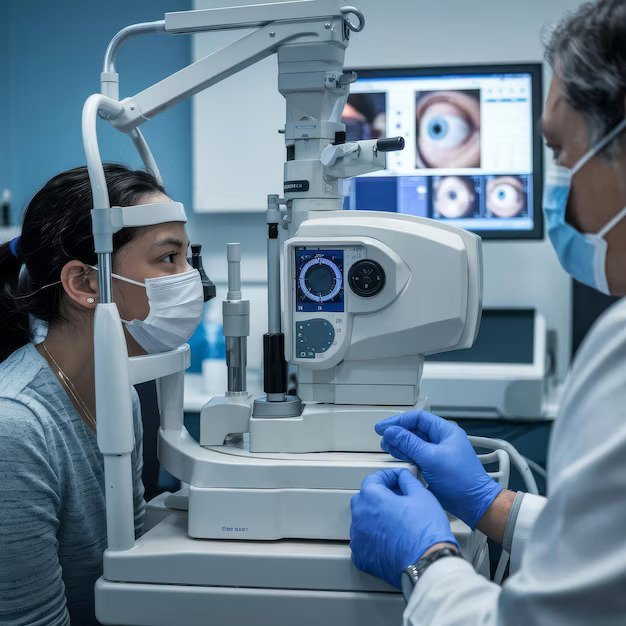Understanding the Process and Benefits of SMILE Eye Surgery
As advancements in medical technology continue to evolve, SMILE eye surgery is leading the charge in the field of vision correction.

SMILE eye surgery is a cutting-edge procedure designed to correct vision problems such as myopia and astigmatism. Over the past decade, it has emerged as a favored alternative to other laser-based surgeries like LASIK and PRK, thanks to its minimally invasive nature and quicker recovery times. For individuals seeking freedom from glasses or contact lenses, SMILE presents an opportunity to achieve long-lasting vision correction with reduced discomfort.
What Sets SMILE Eye Surgery Apart?
SMILE, which stands for Small Incision Lenticule Extraction, differs from other refractive surgeries primarily in its approach to reshaping the cornea. In traditional LASIK surgery, a large flap is created in the cornea, which can lead to complications such as flap dislocation, especially in athletes or those with active lifestyles. SMILE, on the other hand, eliminates the need for a corneal flap by using a femtosecond laser to create a tiny incision and remove a small piece of tissue, known as a lenticule. This tissue extraction corrects the shape of the cornea and, as a result, improves vision.
The entire procedure takes about 15-20 minutes and is typically performed on an outpatient basis. Patients experience very little discomfort during the surgery, and since the incision is minimal, the risk of infection or other complications is significantly lower.
How SMILE Eye Surgery Works
The first step of SMILE eye surgery involves an extensive pre-operative evaluation. During this assessment, the ophthalmologist will conduct a series of tests, including corneal thickness measurement, to determine the health of the eye and ensure that the patient is a good candidate for the surgery. This step is crucial, as not all individuals are suited for SMILE. Candidates must have a stable prescription for at least a year, and the procedure is most effective for those with moderate to high myopia and mild astigmatism.
Once the patient is cleared for surgery, they will be prepped by numbing the eyes with special anesthetic drops. During the procedure, the femtosecond laser creates a lenticule within the cornea’s middle layer. The laser precision is such that the tissue is removed without disturbing the surface layers of the cornea, which is a key difference from LASIK. A small incision (about 2-4mm in length) is made on the surface of the cornea, and through this incision, the lenticule is carefully extracted. The removal of the lenticule allows the cornea to reshape, thereby improving the eye’s ability to focus light correctly on the retina.
Advantages of SMILE Eye Surgery
There are several advantages of SMILE eye surgery that make it a preferred option for many patients:
-
Less Invasive: The smaller incision made during SMILE reduces trauma to the cornea, which allows for a quicker healing process compared to LASIK or PRK.
-
Fewer Risks: Without the need for a corneal flap, SMILE significantly lowers the risks associated with flap complications, such as dislodgement or infection.
-
Reduced Dry Eye Symptoms: Since the surgery preserves more of the corneal nerves responsible for tear production, SMILE patients report fewer problems with dry eyes post-surgery, making it ideal for individuals with pre-existing dry eye syndrome.
-
Suitable for Active Lifestyles: Athletes, military personnel, and others with physically demanding lifestyles benefit from SMILE because of the reduced risk of flap-related injuries that are more common with LASIK.
-
Stable and Predictable Outcomes: Studies have shown that SMILE produces excellent long-term vision correction outcomes with high patient satisfaction rates. The procedure’s precision ensures that results are stable over time.
Ideal Candidates for SMILE Eye Surgery
SMILE eye surgery is designed primarily for individuals with myopia (nearsightedness) and mild astigmatism. Patients with prescriptions up to -10.00 diopters of myopia and up to -3.00 diopters of astigmatism are generally considered good candidates for the procedure. However, as with any surgical procedure, the suitability of SMILE depends on individual factors such as corneal thickness, eye health, and the stability of the prescription.
People who suffer from thin corneas or dry eyes, and those who may not qualify for LASIK, often find that SMILE is a viable alternative. The surgeon will conduct a detailed examination and evaluation to ensure that SMILE is the best choice for the patient’s specific vision correction needs.
Recovery and Post-Operative Care
The recovery process after SMILE eye surgery is typically quick and straightforward. Most patients experience an improvement in their vision within the first 24-48 hours. However, it’s important to note that while vision improves rapidly, it may take several weeks to reach peak clarity.
During the recovery phase, patients are advised to avoid strenuous activities, especially those that may involve direct contact with the eyes, such as swimming or contact sports. Rubbing the eyes should also be avoided, as this can interfere with the healing process. Eye drops may be prescribed to aid in the healing process and prevent infection.
Regular follow-up visits with the surgeon will help monitor the healing progress and ensure that the vision is stabilizing properly. Most patients are able to resume normal activities, including work, within a few days of the procedure.
Conclusion
SMILE eye surgery has quickly become a leading choice for individuals seeking permanent vision correction without the need for glasses or contact lenses. With its minimally invasive approach, reduced risk of dry eye, and faster recovery times, SMILE offers a modern solution to refractive errors like myopia and astigmatism. For those looking to enhance their quality of life with clearer vision, SMILE eye surgery is a safe and effective option worth considering.
What's Your Reaction?

















